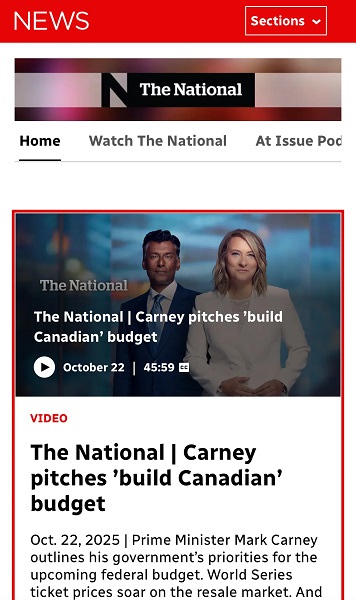Bruce Dowbiggin
Ask Not Who Killed The Expos. It Was The Blue Jays
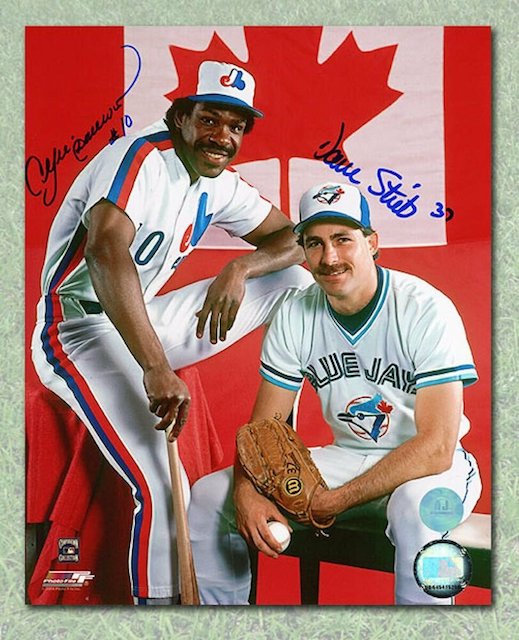
Watching thousands of Canadian fans stream into T-Mobile Stadium in Seattle to watch the Toronto Blue Jays play the Mariners this past weekend was a stirring sight. Canadians seemed to represent about 60 percent of the crowds. The baseball fans from across Canada’s West have made the Jays their team, stretching the Jays fandom from sea to sea to sea.
Sadly, the Jays could not make them happy, as the Mariners staged some improbable comebacks to take the series two games to one from the Jays. But it did little to stem the fans’ enthusiasm for the frustrating Blue Jays, who are battling Seattle for the final wildcard playoff spot in the American League.
For longtime MLB fans in Canada the excitement for Toronto is a throwback to the days when the Montreal Expos were “Canada’s team” from 1969 to the mid-90s. The extinct Expos were followed rabidly as they became the first Canadian team in MLB and then the first Canadian team to make the postseason.

Spurred by the brilliant Gary Carter, Andre Dawson, Tim Raines, Steve Rogers and Tim Wallach, the ‘Spos of that era captured hearts the way the Jays do now. The national broadcasts of their games were shown across the continent. In Maple Ridge B.C. young Larry Walker— a future Expo superstar and HOF selection— chose baseball as a result of the Expos’ influence.
So it seemed only natural that when the idea of Toronto getting an MLB club became a possibility in the mid-1970s that Expos would whole-heartedly push for Canada to double its MLB contingent. After all, two clubs would double the enthusiasm for the sport in Canada, spawning more Larry Walkers in the future.
Little did Montreal president/ GM John McHale know that his friendly support for Toronto would end up as the death knell for his Expos franchise in 2005. No one thought that when the Jays began play in the snow of Exhibition Stadium in 1977 that they’d pitilessly cut the economic throats of their cousins down the 401 Hwy.
Nothing much happened in the early years of the Expos/ Jays “rivalry”. The Expos were entering their first peak seasons fighting for the NL East title. Everyone in Canada wanted a piece of the story. In addition to CBC TV showing the games nationally, Montreal also developed as network of local radio stations across the country. We can remember listening to Dave Van Horne doing Expo games on an Oshawa, Ont., station, fighting the static to hear the outcomes. There were similar stations in Ottawa and Windsor, Ont., and a number of other smaller Canadian markets.
The Jays, meanwhile, aligned with CTV as the club was regularly pounded by its AL East opponents in the early years at the freezing Mistake By The Lake. But even as the team floundered on the field, the owners of the Jays— primarily Labatt Breweries— looked around MLB and noticed that no team was allowed to encroach of the broadcast territory of another club.

As the Jays went from weak sister to equal partner to dominant team on the field winning the 1992-93 World SXeries, their tone about letting Expo games generate income in their territory grew less than cordial. Labatt Breweries owned the biggest, most lucrative market in Canada. And only they should profit from it.
This exposed the fundamental weakness of the Montreal franchise. The Olympic Stadium was proving to be a cold, fan-unfriendly disaster. Hundreds of thousands of English speakers had left the province when the Parti Québecois took power. At the same time as initial owner Charles Bronfman was tiring of coming up short on the field and repeated labour stoppages, the Expos were threatened with a severe hit to their broadcast revenues.
Their friendly sharing of MLB in Canada with the Jays now appeared naïve. MLB said the Expos could control Quebec and the Maritimes, but it would have to stay out of southern Ontario. McHale could see the writing on the wall. Owner Bronfman appealed to then-commissioner Bowie Kuhn for relief, saying this ruling would “ghettoize” the team within Canada. His intent on buying the club in 1969 had been to “bring Quebec into the nation”. Instead, the team he’d encouraged to join MLB was freezing the Expos out of the large English speaking markets.
After hearing from the Jays, Kuhn allowed the Expos to show 15 TV games a season in Ontario. McHale and Bronfman knew this was inadequate. As the Jays started getting into the postseason in 1985 and the Expos sank in the NL the die was cast. Making it worse, the Canadian dollar began its plunge that ended with a 62-cent dollar versus the U.S.
The 1994 season, in which Montreal had the best record in MLB, was cancelled. Bronfman sold the club to a consortium of owners without Bronfman’s means. By 2000, attendance nosedived as the Expos dumped their great core of Walker, Pedro Martinez, Moises Alou and John Wetteland. By the early 2000s, new American owner Jeffrey Loria was actively trying to sell the team to investors who’d move it to the U.S.

Mar 27, 2018; Montreal, Quebec, CAN; Montreal Expos former players Steve Rogers (45) and Tim Raines (right) pose with Toronto Blue Jays catcher Russell Martin (55) before a game between the St. Louis Cardinals and the Toronto Blue Jays at Olympic Stadium. Mandatory Credit: Eric Bolte-USA TODAY Sports
By 2005, the Expos were sold to new owners in Washington who renamed the club the Washington Nationals. Loria, meanwhile, was allowed to buy the Florida Marlins franchise, which he ran into the ground much as he’d done to the Expos.
The Blue Jays, meanwhile swept in to capture the entire Canadian sports TV audience. They are today valued by Forbes magazine at a cool $2.1 billion. There was talk of transferring the Tampa Bay Rays to Montreal but that evaporated when local Florida politicians promised lawsuits. MLB is now talking about possibly returning to Montreal as an expansion club should they build a proper ball park.
Although who in Quebec has a billion to throw at a baseball stadium is unclear. And how they’d get past the Blue Jays monopoly on broadcast rights in Canada is also a huge question. Just remember, however, that you needn’t look far to see who had a large hand in killing the Expos.
It was the Toronto Blue Jays.
Sign up today for Not The Public Broadcaster newsletters. Hot takes/ cool slants on sports and current affairs. Have the latest columns delivered to your mail box. Tell your friends to join, too. Always provocative, always independent. https://share.hsforms.com/16edbhhC3TTKg6jAaRyP7rActsj5
Bruce Dowbiggin @dowbboy is the editor of Not The Public Broadcaster A two-time winner of the Gemini Award as Canada’s top television sports broadcaster, he’s a regular contributor to Sirius XM Canada Talks Ch. 167. Inexact Science: The Six Most Compelling Draft Years In NHL History, his new book with his son Evan, was voted the seventh-best professional hockey book of all time by bookauthority.org . His 2004 book Money Players was voted sixth best on the same list, and is available via http://brucedowbigginbooks.ca/book-personalaccount.aspx
Bruce Dowbiggin
Is Roundball A Square Game? Sports Betting Takes Another Hit

The most-heard response to last week’s FBI arrests of NBA stars in a gambling sting was “Why do athletes earning millions need to win thousands betting spots?” Coming on the heels of the apparent Shohei Ohtani coverup— his translator took the fall—it also begs the question just how legitimate are the games on which the public bets? Especially with pro sports now partnering with legalized gambling outfits.
There have long been stories of the high-stakes poker and golf games played by Michael Jordan, Charles Barkley and other mega sports celebrities. There was the shocking scandal of former NBA referee Tim Donaghy fixing games for gamblers. Hockey fans remember the tawdry 2006 episode of Wayne Gretzky letting his wife take the fall for betting debts with former NHL star Rick Tocchet.
Now this. NBA Hall of Fame member Chuancy Billups, the suspended coach of the Portland Traiblazers, and Terry Rozier of Miami Heat were the eye candy in the arrest, but the problems go much deeper. If you listen to people like former mob guy Mike Franzese, who now is a security consultant, the reality is not The Sopranos method of busting limbs and shooting deadbeats. It’s more subtle.
According to Franzese the biggest fear for those caught in the web of underworld gambling is exposure of their mistakes. They will do anything to avoid these problems becoming known to their families, their friends and, most of all, their employers. They think the best way to avoid exposure is to play along with mobsters, become a small pawn in crooked betting and poker rings. As if.
So how do they get caught up in there first place? As Franzese explains, “The competition they have on the field spills over into the dressing room, where athletes on the same team often compete with each other in what they think is innocent betting on other sports.” In short they feel like big shots in Guys and Dolls tossing around dice. No one will ever get caught. Pretty soon, these naïve young men are racking up debts in the tens and even hundreds of thousands.
Because they can’t go the bank to finance their debts they end up looking for money on the streets from bookmakers connected to the mob. (It’s why the underworld knew long before the news went public about the bets coming via Ohtani’s translator) And that’s where they get hooked.
The people holding their debt are happy to let their marks get even deeper in debt, so as to have a better grip on them. While the mob guys threaten violence, what they want most is a conduit to the action. So, in the case of Rozier or former Raptor Jontay Porter, they’re asked to shave points on the proposition bets offered on their production. In the case of Billups, they’re asked to front corrupt poker games with whales (big bettors) lured by the promise of celebrities at the table.
Whatever the hook, they hope they can quickly escape the trap, but soon they discover they’re captives till they are of no use in fixing results of drawing big card players. Because they’re often panicked or broke from a divorce or bad investment they try to make the money back quickly. For the reason that even a 60 percent winning percentage is considered high, repeat winners in the 80-90 percent range tip off authorities. Betting pros know not to be conspicuous but to accept a medium return over a long term. But Billups fleecing guys for big stakes in poker is not inconspicuous.
Most often they face the option of going bankrupt or turning evidence to the Feds to escape. Neither is an acceptable fate for someone who, until their habit tripped them up, was considered heroes and role models.

So how straight are the games that people trust for honesty? Especially now that legalized gambling has expanded the pool of bettors incrementally. With everyone looking for an edge or a secret source it’s a temptation trap. The pro sports leagues have security departments always win the lookout for suspicious behaviour, but they are loathe to expose those athletes who have gotten into the trap.
The leagues are also their own worst advocates. Even though Tocchet admitted to the 2006 gambling allegations the NHL has seen fit to let him coach in modern-day NHL. Gretzky turned in his innocence card when MGM needed a front man for its sports betting operation.

Current Tigers manager A.J. Hinch was the manager of the wining Houston Astros when they cheated in the 2022 World Series. And Ohtani continues to star with the Dodgers, despite leaving his gambling-addicted translator in the dressing room of the California/ L.A. Angels for almost five years to soak up the kind of info the mob craves.
Likewise the casinos and betting sites want no exposure from reckless gamblers. Combined with the addictive appeal of betting to the players and fans, the problems are not likely to diminish. As a famous robber once said when asked why he robbed banks, “Because that’s where the money is.”
Bruce Dowbiggin @dowbboy is the editor of Not The Public Broadcaster A two-time winner of the Gemini Award as Canada’s top television sports broadcaster, his new book Deal With It: The Trades That Stunned The NHL And Changed hockey is now available on Amazon. Inexact Science: The Six Most Compelling Draft Years In NHL History, his previous book with his son Evan, was voted the seventh-best professional hockey book of all time by bookauthority.org . His 2004 book Money Players was voted sixth best on the same list, and is available via brucedowbigginbooks.ca.
Bruce Dowbiggin
While America Shrugs Off Woke, Canada Doubles Down On Feminizing Society

There is a truism that politicians believe that strategy wins battles. Generals know that logistics win battles. Translation: You can have all the shiny new weapons but if you don’t have a delivery system to support them you’re going to lose.
The success of the Woke Left this past generation has been its creation of delivery systems in the media and culture to carry out their agenda. The result: a feminization of Western culture, exemplified by the manic hatred of 1980s alpha man Donald Trump. From their modest demand for “safe spaces” they now have rendered all criticism of social dysphoria as hate speech and the speakers criminal. Murder in the service of trans— suggested by Jane Fonda— is considered holy.
Writes conservative political analyst Helen Andrews.. “Everything you think of as wokeness involves prioritizing the feminine over the masculine: empathy over rationality, safety over risk, cohesion over competition… The most important sex difference in group dynamics is attitude to conflict. In short, men wage conflict openly while women covertly undermine or ostracize their enemies.” Translation: If it feels good it must be correct.
As we noted in June emotional narratives now override facts in public discourse. The currency in this societal change has been victimization as the badge of virtue. Young women, in particular, are willing to believe even the most outlandish claims of victimization in exchange for credibility in the Woke camp. One example from the past week’s No Kings performative marches example: Women are being ignored in media or being discriminated against in hiring or academia. As if.

No Kings had all the hallmarks of the victim strategy. A predominately female, plus-60 audience and their handlers from the education system, all united in loathing Donald Trump. The shared distress brought on by POTUS 47. A Hollywood component led by Kathy Griffin.
So, after all the bonding and talking, what message did they take away from the large crowds and media love? Was it empathy or rationality? As Andrews writes, “The outcome of a discussion is less important than the fact that a discussion was held and everyone participated in it.” Besides a few pathetic folk songs, badly written signs, cheeky assassination memes they mostly took away a feeling of unity. It was, like Stalin’s Soviet Union army parades, a display of the delivery systems they’ll use to enforce loyalty in the future.
For organizers who know they’re not going to get rid of POTUS 45/ 47 anytime soon, there was the added confidence that this base will fall obediently in line when the nomenklatura call them to do their bidding— the same way they did on lockdowns, vaccines and pussy hats.
The problem for the Left’s leaders after all the Charlie Kirk references and Pete Seeger nostalgia is that the delivery system is still struggling to find a new wedge weapon to slow down Trump. (He’s still polling in the high 40s approval with pollsters who correctly called 2024.) All the Congressional shutdowns, Epstein references and Putin references that worked before are now failing.
“CNN: This shutdown is a different world for Trump than the 2018-19 shutdown. He’s in a much better spot. Here is his Shutdown Trump Net Approval
Blame Trump for Shutdown:
2019: yes 61%
2025: no 48%
Worse, support for critical issues such as trans is falling. Canadian political scientist Andrew Kaufman shocked progressives with polling showing that trans identification is in free-fall among the young the past five years. So is nonbinary identity. (Pretty soon only their demented parents will buy the grift.)
As well, Congressional district adjustments could give the GOP as many as 20 new seats in the midterm. Hence the broad hints at violent civil unrest from the more excited paraders this weekend. And the disingenuous claims of how peaceful the Left was on the weekend. In short it was No Kings. No New Ideas.
While America roils in the dynamics of a Woke retreat, Kaufman points out that Canada remains entirely in the thrall of the feminized morality introduced by Justin Trudeau’s election ten years ago this month in 2015. “Liberals: Stop importing US politics into Canada. Also Liberals: Hey look, the U.S is holding a ‘No Kings’ protest. Let do it too.”
The image of the hip, sexually ambiguous Trudeau has been followed by the feminized Mark Carney with his trans child. The symbolism is no accident. The Canadian Left’s rock/ paper/ scissors emotion now trumps irrationality. Canadians questioning dysphoria or promoting traditional male roles is now punishable by firing or banishment from social media. Emotional blackmail is a delivery system for Canada’s left. But it only goes one way. If you act like a traditionsl man publicly (see: Danielle Smith) your female cloak of supremacy loses its superpowers.

While the U.S. Left struggles the political delivery system Canada is, by contrast, armed to the teeth with live feminist ammo aimed at Pierre Poilievre. Somehow the meek bureaucrat from Ottawa is painted as mini-Trump by the heavy hitters of the Left. The past week saw the titans of the keyboards twist anti PP comments from a former Stephen Harper aide into an attack from the former PM. It took hours before Harper’s office quashed the implications of Polievre hate, too late to expunge the scars.
Elbows Up aficiandos took their shots, too: “Here’s a sample: @PierrePoilievre has desecrated the memory of my father and insulted every officer who has served in the RCMP. This cannot be forgiven or forgotten.” This after Poilievre asked why it was not an issue that a fired Minister of Justice, Jody Wilson Raybould, was not allowed to ask why Skippy didn’t want the RCMP to do their job. This was 14 times she was told to stand down on issues over Trudeau’s donors.
To forestall any rejection of Woke, Carney’s strategy is to turn Canada in the direction of ultra-liberal Europe and away from Trumpland. But the logistics of a crumbling economy and separation on several fronts in Canada may take the decision out of his hands.
Bruce Dowbiggin @dowbboy is the editor of Not The Public Broadcaster A two-time winner of the Gemini Award as Canada’s top television sports broadcaster, his new book Deal With It: The Trades That Stunned The NHL And Changed hockey is now available on Amazon. Inexact Science: The Six Most Compelling Draft Years In NHL History, his previous book with his son Evan, was voted the seventh-best professional hockey book of all time by bookauthority.org . His 2004 book Money Players was voted sixth best on the same list, and is available via brucedowbigginbooks.ca.
-

 Alberta2 days ago
Alberta2 days agoPremier Smith sending teachers back to school and setting up classroom complexity task force
-
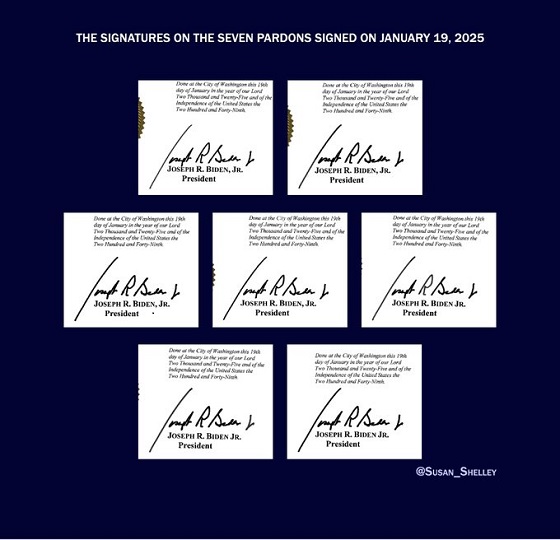
 International23 hours ago
International23 hours agoBiden’s Autopen Orders declared “null and void”
-

 Business1 day ago
Business1 day agoTrans Mountain executive says it’s time to fix the system, expand access, and think like a nation builder
-
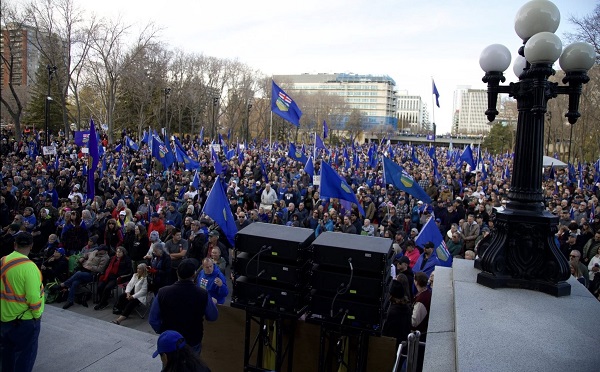
 Alberta1 day ago
Alberta1 day agoThousands of Albertans march to demand independence from Canada
-

 Canada Free Press1 day ago
Canada Free Press1 day agoThe real genocide is not taking place in Gaza, but in Nigeria
-
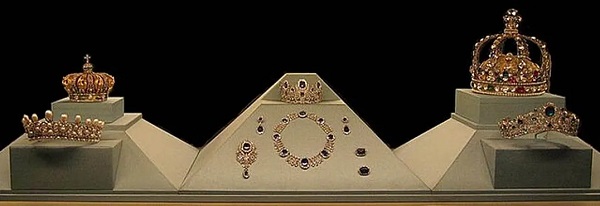
 Crime1 day ago
Crime1 day agoSuspect caught trying to flee France after $100 million Louvre jewel robbery
-

 Business14 hours ago
Business14 hours agoCanada has given $109 million to Communist China for ‘sustainable development’ since 2015
-

 Business24 hours ago
Business24 hours agoCanada’s combative trade tactics are backfiring



